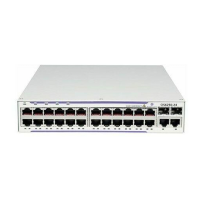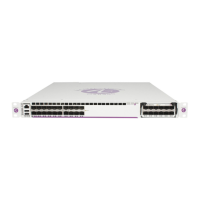Overview
Page 388 7210 SAS D, E, K OS Quality of Service Guide
Overview
The Service Egress policy defines the Service Level Agreement (SLA) for service packets as they
egress on the access SAP. Service Egress QoS policies allow the definition of queue parameters
along with remark policy.
With the default service egress policy, the system allocates 1 (one) queue. All the 8 FCs are
mapped to use the same queue. User has an option to define up to 8 queues per policy and define
the forwarding class to queue mapping. In addition, the policy allows the user to define the queue
parameters. The hardware does not support a linear range of values for the rate parameters (both
cir and pir). The user can specify the computation method of rates to match the rates supported by
the hardware, through the configuration of adaptation-rules.
The SAP Egress policy for access SAPs supports the following:
• Per SAP egress queuing and shaping, Hierarchical shaping on SAP egress (with 3 levels of
shaping) with per FC/queue shaper, per SAP aggregate shaper and per port egress rate
shaper.
• SAP Egress Queues, Shaping and Scheduling
→ Provides an option to configure 2 - 8 egress queues per SAP. The hardware queues are
allocated in groups of 2 and reserved for use by the SAP even though user specifies an
odd value.
→ Provides an option to configure the FC to queue map, allowing the user to assign the
packets classified into a particular FC to any one of the queues configured for the SAP
→ On SAP egress, only a single queue can be configured per FC and all traffic (unicast
and BUM) share the single queue
→ Allow configuration of queue shaper rate (CIR/PIR), cbs and mbs, queue priority and
weight. The assigned priority and weight is used to determine the priority and weight
of the queue in both the CIR and PIR scheduling loop.
→ Allow configuration of WRED slopes (per queue) – high-slope and low-slope. One of
the configured WRED slopes is used to allocate buffer to the packet. In-profile
packets use the high-slope and out-of-profile packets use the low-slope. The profile of
the packet is determined at the ingress (access uplink port ingress or Access SAP
ingress) and carried through to be used at SAP egress to determine the WRED slope to
apply and also to determine the egress marking value to use (if remarking/marking is
enabled).
→ Support Strict priority (SP) scheduling and Weighted-Fair Queuing (WFQ) scheduling
for SAP egress queues.
• SAP Egress remarking/marking

